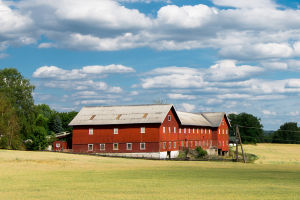Green fields, also known as greenfield sites, refer to undeveloped land, usually located on the outskirts of urban areas or in rural regions.
They are often considered prime locations for new developments, as they offer an opportunity to build new infrastructure, housing, and commercial facilities from scratch. However, the development of green fields has raised concerns about the loss of natural habitats and biodiversity, as well as the environmental impact of new construction projects.
One of the main advantages of green fields is that they offer a blank canvas for developers to create new communities, which can help alleviate housing shortages and create economic growth.
However, the development of green fields often involves the destruction of natural habitats, including forests, wetlands, and grasslands, which can lead to the displacement or extinction of native species. Moreover, the construction of new buildings, roads, and utilities can disrupt natural water cycles, increase soil erosion, and contribute to air and water pollution.
In recent years, there has been a growing recognition of the importance of preserving natural habitats and biodiversity, as well as reducing carbon emissions and mitigating the impacts of climate change. As a result, many governments and organizations have implemented policies and regulations aimed at protecting green fields and encouraging sustainable development practices.
One approach to protecting green fields is through the use of green belts, which are areas of land surrounding urban areas that are protected from development.
Green belts can help preserve natural habitats and promote biodiversity, while also providing recreational opportunities for nearby residents. Moreover, green belts can help prevent urban sprawl, which can lead to increased traffic congestion, pollution, and a loss of community cohesion.
Another approach to sustainable development is through the use of green infrastructure, which involves the integration of natural systems and processes into urban planning and design. Green infrastructure can include the preservation of natural habitats, the creation of green spaces such as parks and gardens, and the use of sustainable materials and technologies in building construction.
By incorporating green infrastructure into development projects, it is possible to reduce the environmental impact of new construction while also providing multiple benefits for local communities, such as improved air and water quality, reduced energy consumption, and enhanced public health.
In addition to these approaches, there is also a growing movement towards the development of eco-cities, which are designed to be sustainable and self-sufficient communities.
Eco-cities incorporate a range of green infrastructure and sustainable technologies, such as renewable energy systems, green roofs, and rainwater harvesting, to minimize their environmental impact and promote a high quality of life for residents.
By combining the principles of sustainable development with innovative design and technology, eco-cities offer a promising model for future urban development.
Overall, the development of green fields presents both opportunities and challenges for sustainable development. While green fields offer a blank slate for new development and can help address housing shortages and promote economic growth, they also raise concerns about the loss of natural habitats and biodiversity, as well as the environmental impact of new construction.
However, through the use of green belts, green infrastructure, and eco-cities, it is possible to balance the needs of development with the protection of natural ecosystems and the promotion of sustainable practices.
By working together to find innovative and sustainable solutions, we can ensure that future generations inherit a world that is both prosperous and healthy.


